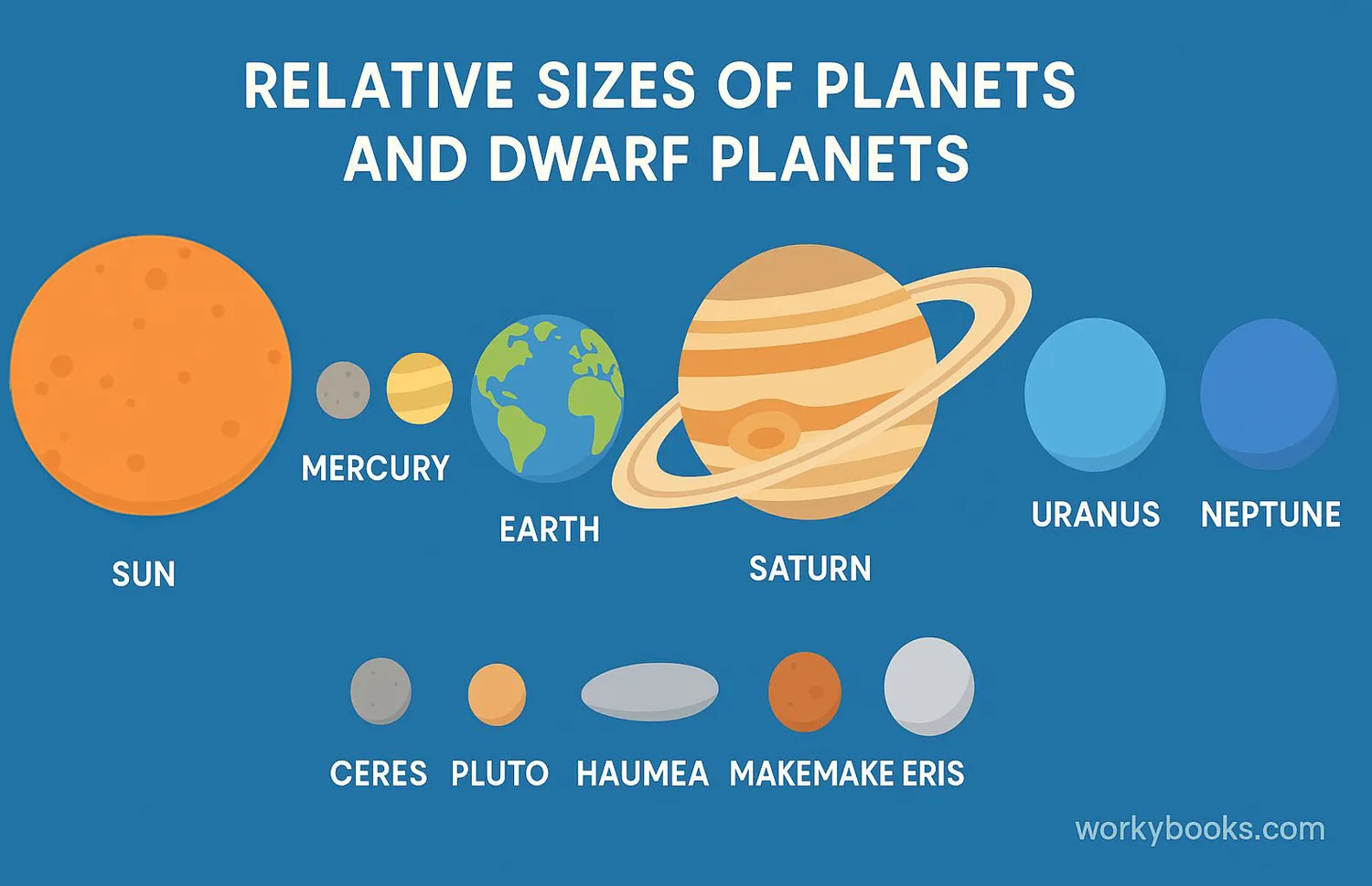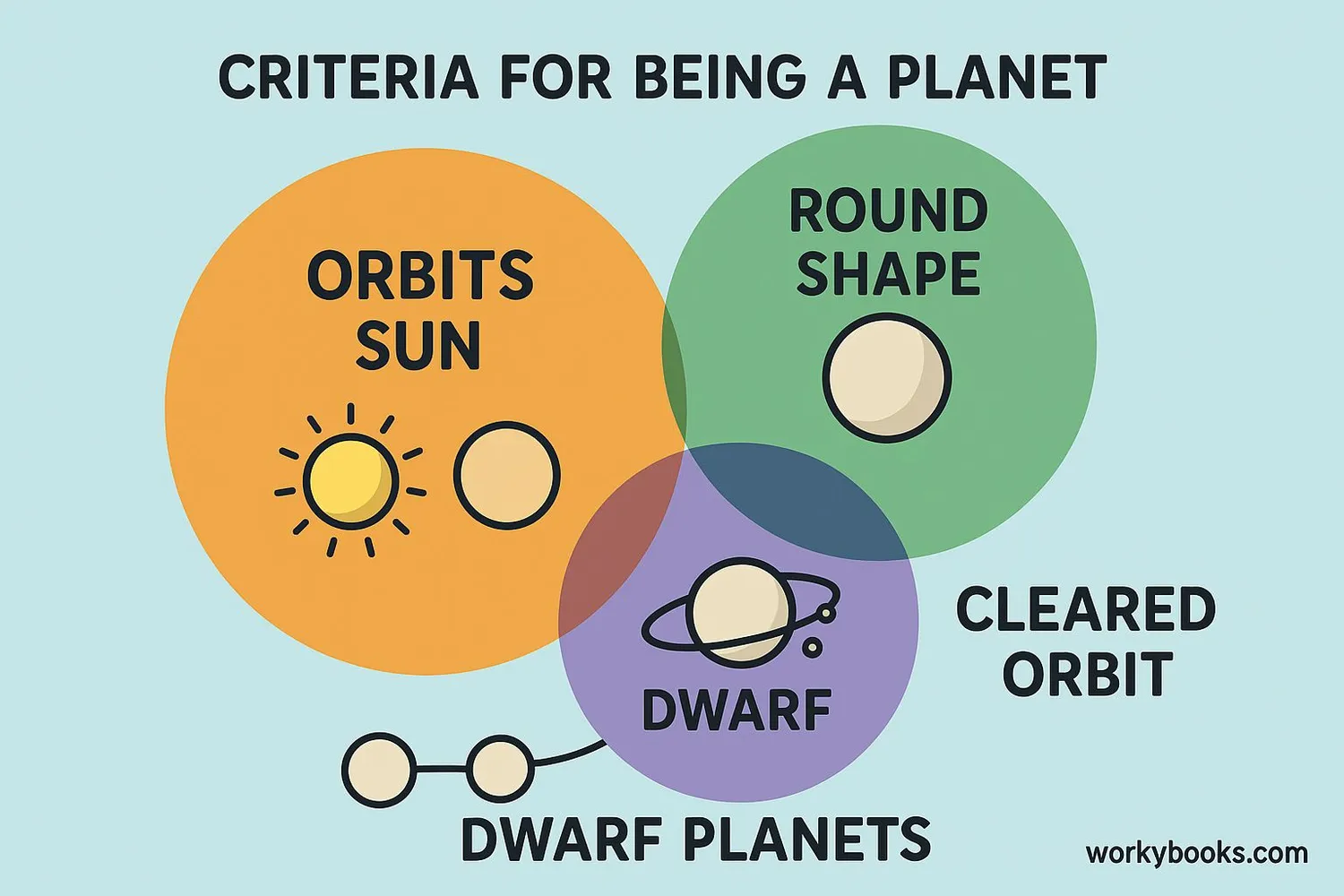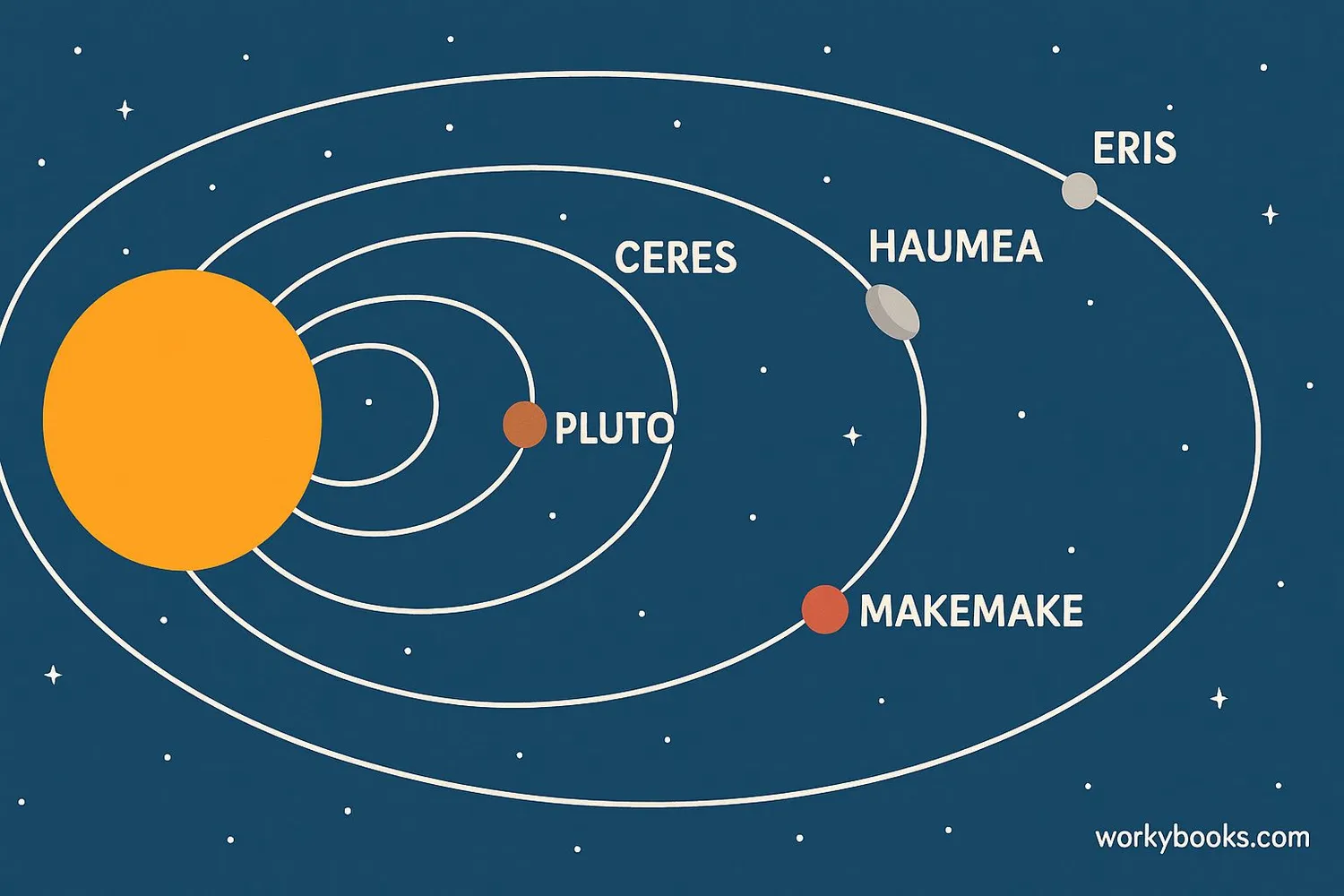Dwarf Planets - Definition, Examples, Quiz, FAQ, Trivia
Learn about the small worlds in our solar system that didn't quite make the planet cut
What is a Dwarf Planet?

A dwarf planet is a small world that orbits the Sun but hasn't "cleared its neighborhood" of other objects. This means there are still other space rocks and debris in its orbital path. The International Astronomical Union (IAU) created this category in 2006 when they updated the definition of what makes a planet.
Dwarf planets are round like planets because they have enough gravity to pull themselves into a spherical shape, but they share their orbital space with other objects. There are currently five officially recognized dwarf planets in our solar system: Pluto, Ceres, Eris, Haumea, and Makemake.
Did You Know?
Pluto was considered the ninth planet from 1930 until 2006 when it was reclassified as a dwarf planet.
Dwarf Planet Characteristics

The International Astronomical Union (IAU) has specific rules for what makes a dwarf planet. Here are the key characteristics:
Orbits the Sun
Like planets, dwarf planets orbit our Sun directly (not another planet)
Round Shape
Has enough gravity to pull itself into a nearly round shape
Not Cleared Orbit
Hasn't cleared other objects from its orbital path
Not a Moon
Is not a satellite orbiting another planet
The main difference between planets and dwarf planets is that planets have cleared their orbits of other significant objects, while dwarf planets share their orbital space with other bodies. This is why Pluto was reclassified - its orbit crosses with many other objects in the Kuiper Belt.
Known Dwarf Planets

There are currently five officially recognized dwarf planets in our solar system:
Pluto
The most famous dwarf planet, discovered in 1930. It has five moons and takes 248 Earth years to orbit the Sun.
Ceres
The only dwarf planet in the asteroid belt between Mars and Jupiter. It's the smallest dwarf planet.
Eris
Slightly more massive than Pluto. Its discovery led to Pluto's reclassification.
Haumea
Egg-shaped with a day only 4 hours long. Has two moons and a ring system.
Makemake
Reddish in color with no known moons. One of the brightest objects in the Kuiper Belt.
Scientists believe there may be hundreds more dwarf planets waiting to be discovered in the Kuiper Belt and beyond. These five are just the ones we've found so far that meet all the official criteria.
Discovery Fact
Eris was originally thought to be larger than Pluto, which sparked the debate that led to Pluto's reclassification as a dwarf planet.
Dwarf Planet Quiz
Test your knowledge about dwarf planets with this quiz. Answer all 5 questions to see how much you've learned.
Frequently Asked Questions
Here are answers to some common questions about dwarf planets:
Dwarf Planet Trivia
Discover some amazing facts about dwarf planets!
Pluto's Atmosphere
Pluto has a thin atmosphere that freezes and falls to the ground as snow when it moves farther from the Sun in its oval-shaped orbit.
Ceres' Hidden Ocean
Ceres may have a subsurface ocean of salty water. Bright spots on its surface are likely deposits of salt left behind when water erupted into space.
Eris vs Pluto
Eris is slightly smaller than Pluto but more massive, meaning it's denser. Its discovery in 2005 led directly to Pluto's reclassification.
Egg-shaped Haumea
Haumea spins so fast (once every 4 hours) that it's stretched into an egg shape. It also has two moons and a ring system!


